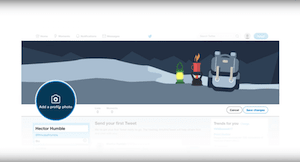
Editor's hint: Share this explainer with stakeholders, parents, and district staff learning what an SIS is!
What is an SIS?
A student information system (SIS) is a web-based software school districts use to store and organize data about the students in their schools. This software has customized features for teachers and administrators, who collect and submit the data, and for students and parents, who use the platform to monitor progress, grades, attendance, and more.One of the most widely known features of an SIS is the gradebook, where scores from daily assignments, quizzes, and tests are entered, but that’s a small part of the innumerable functions an SIS performs on a daily basis.
An SIS for everybody
Teachers
Teachers are front-and-center users to the SIS since a lot of the student information is coming from their observations and data input right in the classroom. On a daily basis teachers use the SIS to take attendance, enter grades, fill out behavior referral forms, and more.The information system is also vital to teachers because the points of data that each staff member inputs can be used to create a full picture of a particular student’s performance and behavior for all faculty. This eliminates the need for bulky files or repetitive email chains with updates.
Administrators
All of the day-to-day information that teachers and staff gather doesn’t stop with them: administrative staff uses the data to inform larger decisions in the school. For example, the guidance counselor and the special education coordinator can use teacher reports and data as evidence for implementing an IEP or a 504 Plan for students with varying learning needs.Another major use for all of that student information? State and federal reporting. Districts use the data from the SIS — and use the SIS’s own programs — to generate the comprehensive reports needed to meet state and federal mandates.
Parents and students
With the family portal in the SIS, parents and students can manage so much more of the school experience than just checking grades (and do that, too!). From the comfort of home or even on a mobile device, the family can pay fees, add lunch money, report new medications, or plan a course for graduation.What makes a successful SIS?
All-in-one efficiency
The efficiency of using a future-ready SIS goes way beyond the convenience of having digital records. A modern, fully-equipped information system will be able to do the record-keeping heavy lifting that used to take dozens of separate programs to accomplish, and will do it in a fraction of the time. Sound complicated? It shouldn’t be: good systems are easy enough to navigate for all faculty and staff to use with ease, and are customizable for the different needs of the hundreds of districts it serves.SIS🤝Security
Hackers, and phishers, and thieves, oh my! Yes, these dangers to digital records do exist and need to be taken seriously, but having a diligent SIS used by a staff well-trained in data security measures will keep many of these threats at bay. Strong SIS security includes:- Cloud hosting data service built-in or provided through a partner software
- Access controls to limit the amount of student data each user can see
- Two-factor authentication for logins
- Training materials on data storage and security
Effortless interoperability
Even though an SIS is its own technology, it takes more than a single system to provide the digital framework of a school district. Just like the kids on the playground, all of those programs need to work together and play nice to ensure a positive and smooth educational experience. A well-rounded SIS will operate in tandem with those other programs and software without needing time out to cobble up quick fixes.Communication, connection, culture, community
Flexibility, usability, efficiency and security are essential for an SIS. But, there’s an often-overlooked quality that makes a truly successful SIS: its ability to open up channels of communication among all users, no matter the preferred method.Whether it’s a personal or a mass message email, an automated or personalized reminder, or even just a quick notification on your cell, the SIS keeps everyone connected.
Follow-up resource: When is it time for a new SIS?
Let's explore in this video playbook.WHAT'S NEXT FOR YOUR EDTECH? The right combo of tools & support retains staff and serves students better. We'd love to help. Visit skyward.com/get-started to learn more.

|
Lindsey Canny Edtech Thought Leader |
Lindsey Canny is a marketing copywriter for Skyward, Inc., a school administration software provider based in Stevens Point, WI. Prior to working at Skyward, Lindsey spent eight years teaching 9th and 10th grade English within the Stevens Point community. Outside of work she enjoys reading books and spending time with her husband and cat.




